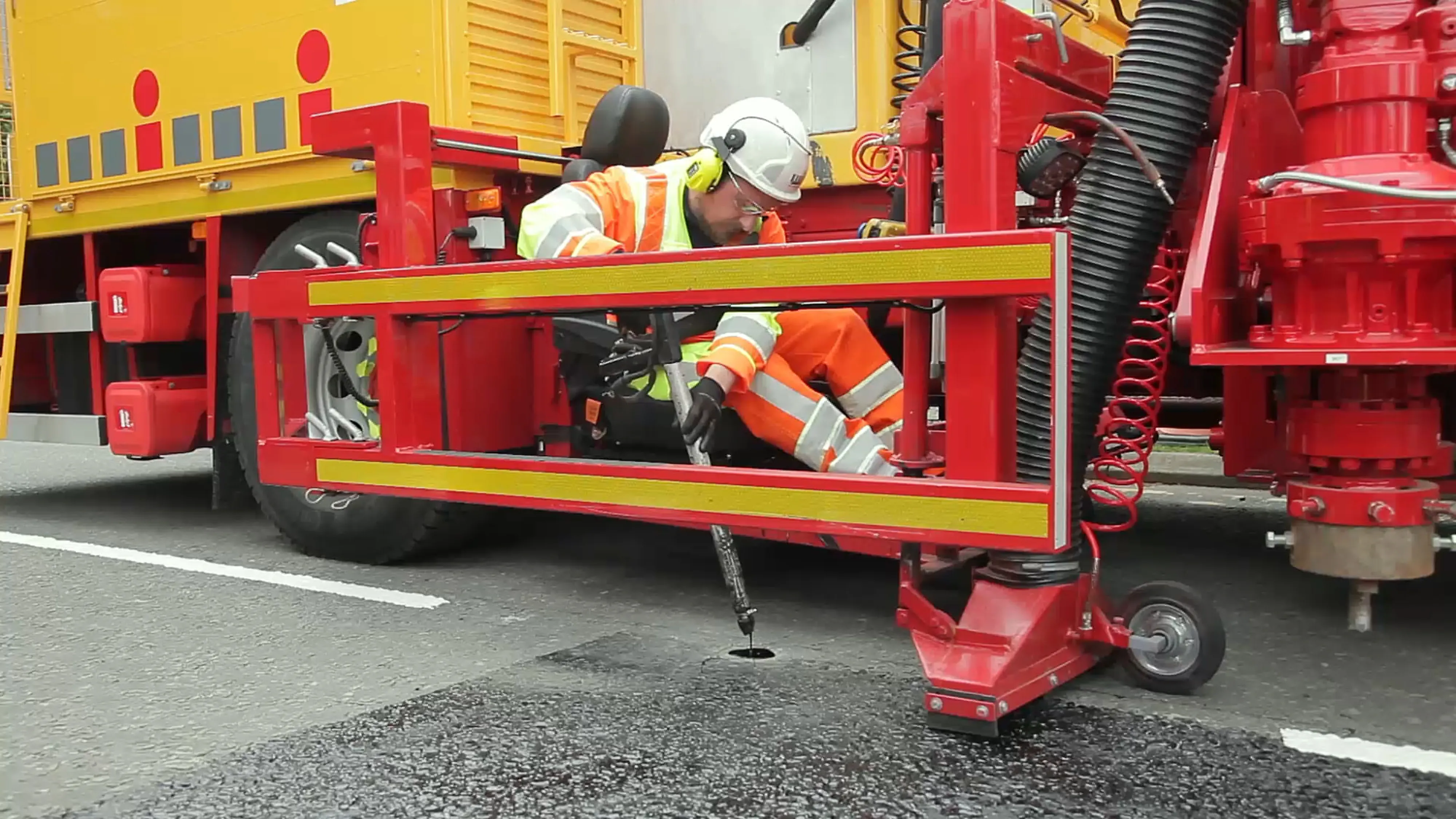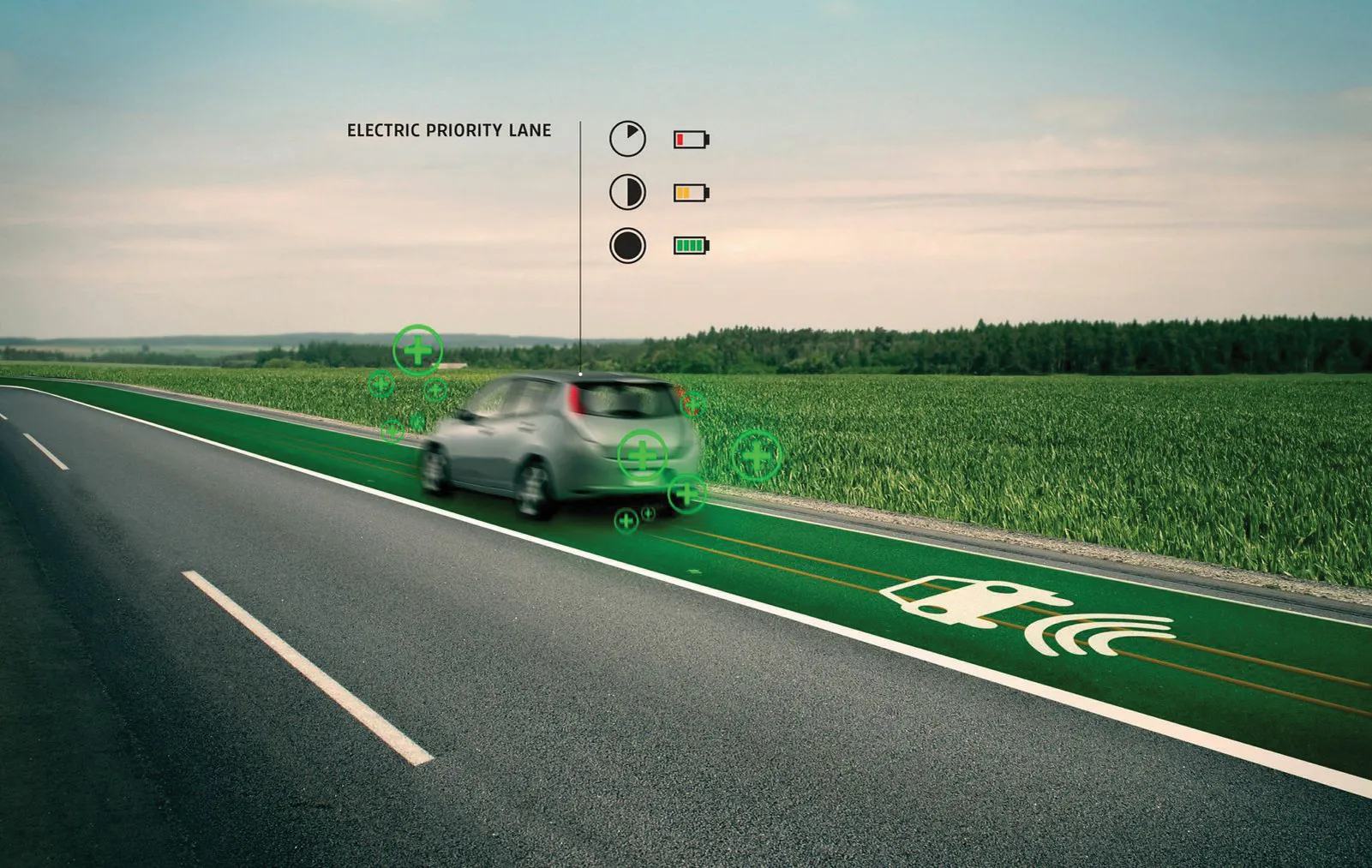
UK-based
However, around 75 guests – European contactors and Belgian government officials – had a sneak preview of the Guardian at a day-long presentation held at Zolder Racetrack, a former Formula One venue just outside Brussels. The event was the first by the UK-Belgian company.
The Guardian is manufactured at WJ’s plant in the UK for supply throughout Europe. It has been available in the UK as a service provided by WJ North, the contracting division of the group. But the European launch will see it become available as a product to be purchased by road contractors and government authorities.
Traditional road stud installation uses a standard milling machine, requires the vehicle and operatives occupy the centre of the road. Even within a controlled traffic management scheme, workers are constantly at risk of injury – even abuse from passing road users.
“Safety is fundamental to any sustainable highway maintenance business, that’s why we invest huge sums in research and development,” said Wayne Johnston, WJ Group managing director, during a demonstration of the vehicle in a parking area outside one of the Zolder’s hospitality venues.
The Guardian allows complete road stud installation while protecting operatives within an integrated safety cell of the 18-tonne truck. The Guardian vehicle’s protective safety benefits are particularly notable during adverse weather and wet night conditions, a fact that’s attracting attention from more European countries, according to WJ.
The WJ Guardian can be used to install all types of road studs. But it was with this process in mind that WJ also developed the EN 1463 certified Allux prismatic road stud, complete with stabilising shank. Allux will also be featured at WJ’s stand at Intertraffic, said Johnston.
The joint venture with ACB has thrived because the two companies’ products complement each other, said Johnston. WJ is a major producer of thermoplastic markings for the highways sector. The company is also a major contractor for markings and road stud – cat’s eye – installation for many UK local authorities.
Meanwhile, ACB concentrates on other types of markings, not just for the road sector, that include methyl-methacrylate (MMA) products and a wide range of anti-graffiti solutions. By working together, the joint venture can offer a wide product range to continental clients. This is especially important as the nature of road markings will undergo a major change in the next two decade with the advent of autonomous and automatic driving, said Johnston. Markings will have to be readable in some way to these new vehicles.
Christophe Nicodeme, director general of the Brussels-based ERF – European Road Federation – explained the complexity of road markings and how innovation will be needed to improve road marking qualities and functions as we enter the driverless and automated age. For example, the “readability” of markings will have to be completely consistent in quality to allow smart vehicles to continually know which lane they are in.
The quality of markings will have to keep pace with the development of lane-keeping assistance strategies and tactics for driverless vehicles. Intelligent speed adaption is another area where markings will likely play a big part, he said.
For several years, Belgium’s regional Flemish government has kept off motorway lights turned off with the exception of junctions, said Sophie De Vlieger, head of roads and traffic for the Flemish government. They are also turned back on in the case of accidents and emergencies.
But there has had to be an upgrading of road markings to accommodate driving in the dark at high speeds, she said during her presentation. She urged more development by contractors and manufactures of markings to improve reflectivity.
Regarding the use of cats eyes by continental authorities, she noted that so far is has been limited to demarcating specific hazardous areas and traffic furniture, such as lane dividing islands and bridge abutments.








